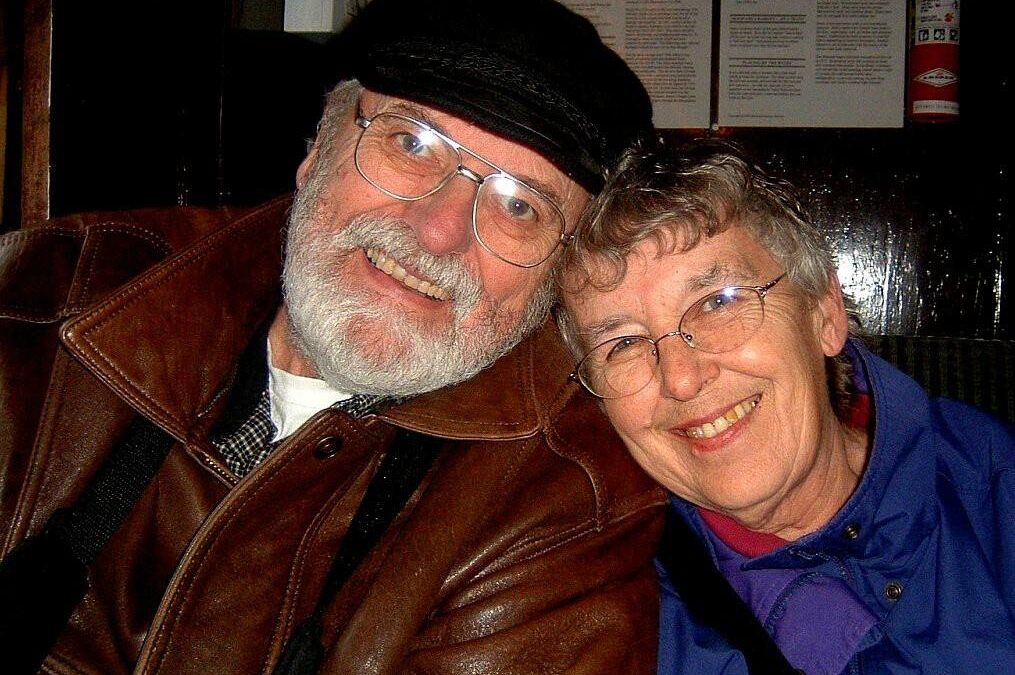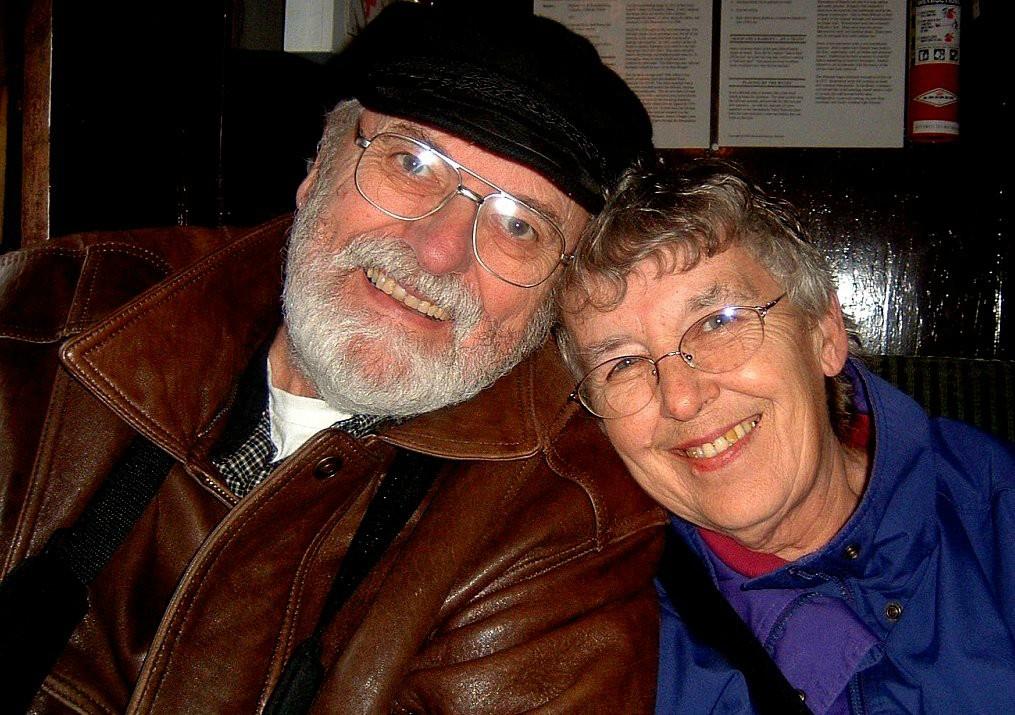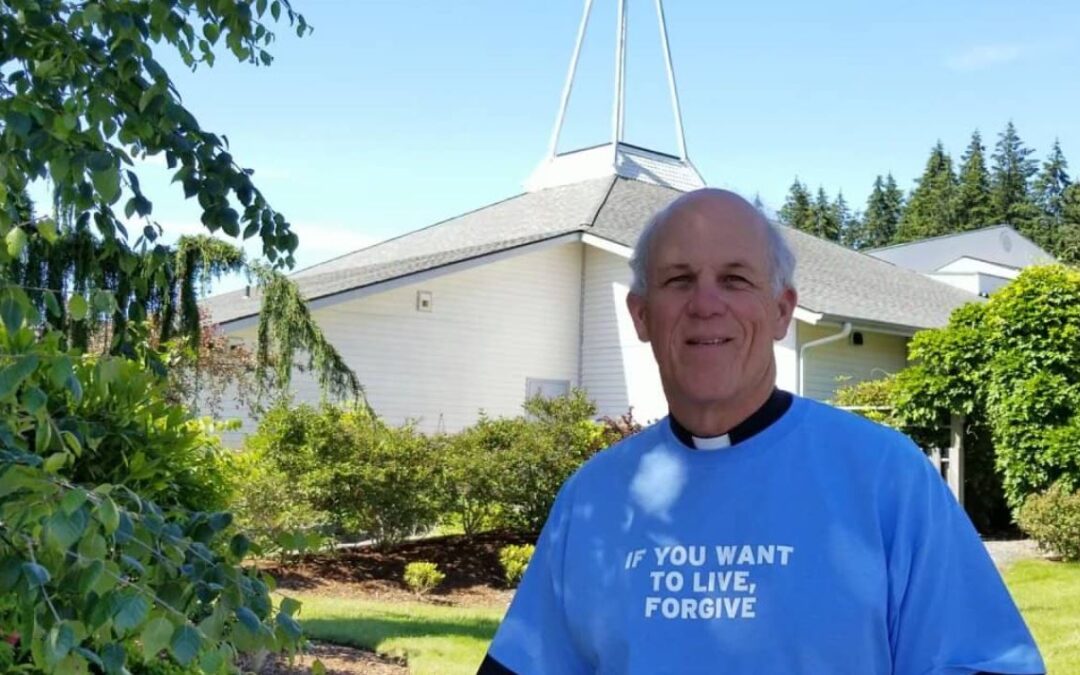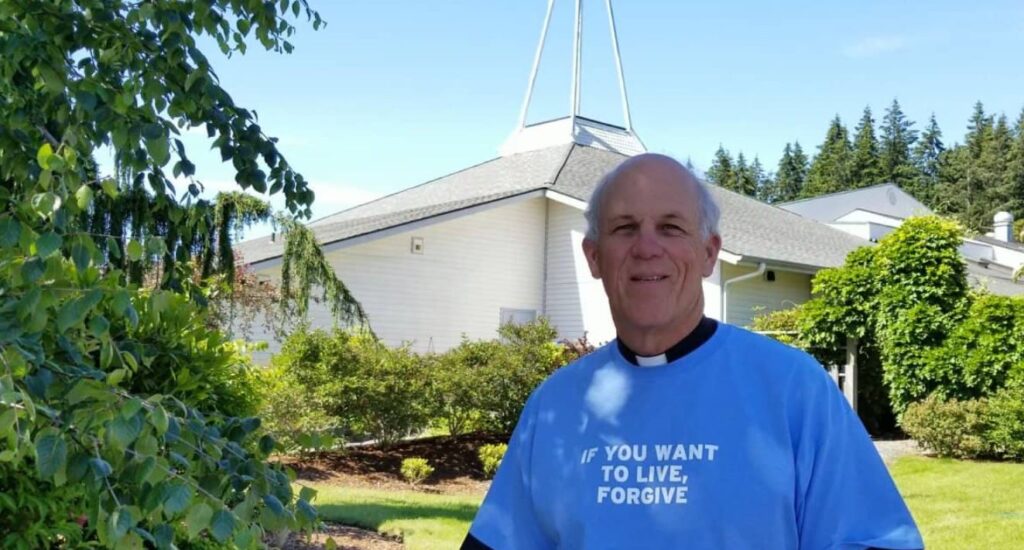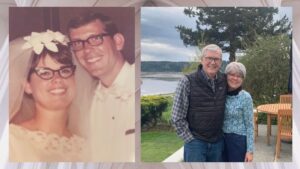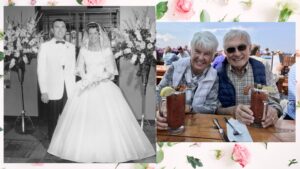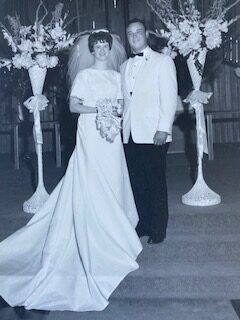Today’s Word from Trinity Keyboardist Sheila Weidendorf…
Farther Along is a very popular southern gospel song, covered by everyone from Ike Turner to The Byrds to Willie Nelson to Johnny Cash and Dolly Parton, Linda Ronstadt, and Emmylou Harris on their 1987 album entitled, “Trio.” The most recent recording I found on YouTube was by the family ensemble, The Petersens, in May of last year.
We do not know conclusively just who actually penned this hymn. The first known print version of the song was in the volume, “Select Hymns for Christian Worship and General Gospel Service,” compiled and edited by Barney E. Warren and published in 1911. It appeared in print again in 1916 in the “Harmonic Chimes Songbook” published in Tennessee. Here the song was attributed to the Holiness preacher, W.B. Stevens who it is surmised authored the lyrics while struggling with the death of his son. (Stevens actually outlived all six of his children.)
Farther Along appeared again in 1921 in a volume called “Eureka Sacred Carols” and here is attributed to the Free Will Baptist preacher, the Reverend W.E. Lindsay, about whom very little is known. As it happens, Lindsay is the only “contender” for authorship who does not have a contemporary descendent defending the claim!
The song appears once more in the 1937 Stamps-Baxter Music Company’s “Starlight Crown” collection, with a new musical arrangement by the publisher—J.R. Baxter—and noted, “As sung by the Burnette Sisters.” Subsequent Stamps-Baxter publications credit the Rev. Stevens with authorship. Fast-forward to 2008, when Wikipedia user James Greer writes an alternative history for Farther Along, claiming his itinerant preacher grandfather, W.A. Fletcher penned the hymn while preaching in “Indian Country” and thus missing the birth of his first-born.
Finally, yet another preacher—Church of the Nazarene minister W.P. Lay ALSO claimed authorship and it is he noted as the responsible party in the 1960s publication “Sing Out!”—specifically on the version of Farther Along sung by Pete Seeger. There seems to be some merit to this claim, in as much as a 1932 copywriter notation in a “Musical Compositions” citing indeed lists W. P. Lay as the author. Perhaps we’ll never know conclusively.
In any case, we DO know that Farther Along was a tremendously popular gospel song that has persisted. The song is, in a way, a lament—a “why do bad things happen to good people” sort of song. Also, a “why do good things happen to bad people” sort of song. It’s a song that maybe says what lots of us occasionally think— “Hey! I’m doing all the right things. Why am I suffering?” And “Hey! Look at that person NOT using their powers for good—why are they rewarded while I am here struggling?!?”
Of course, we should perhaps know better than to compare our experience with anyone else’s. Comparisons are, in a way, a kind of violence. First, in moving from observing external data to judging another’s personhood and their relative “deserving” of reward, we put ourselves in the undependable position of judge and jury. Such judgements perhaps also imply envy or maybe an elevated assessment of what we “should” be having. Second, comparison tends to reduce the compared to the objectified—which is the violence.
Be that as it may, there’s also something in this song that’s more than the Theory of Just Desserts! It’s a very human thing to suffer, and to not understand the why of it. Sometimes life is just really, really hard. Sometimes we experience or witness grievous, senseless loss—times when “Don’t worry, be happy!” just isn’t a perceivable option. Indeed, the world we have created is full of senseless loss, violence, unimaginable yet very real suffering. In our limited human existence, perhaps we can’t always know or understand the Why and Wherefore of it all. In the religious world view that sparked this gospel song— “now” might not be the time for knowing. But someday, in that other world “up yonder” when God reveals His glory, we’ll understand it all, by and by.
Now I’m not big on “pie in the sky” theology. But I AM big on the idea of surrender as a spiritual practice. In my own experience, I can say for certain that I do not always understand the why of things when life gets hard, in those between-a-rock-and-a-hard-place moments. It’s altogether too easy to cast blame and aspersions—even upon ourselves—when we feel bad. It’s too easy to feel unworthy of love and care and support—even of God’s love—when things aren’t how we think they should be.
So where perceiving, understanding, knowing seem unavailable—sometimes all we can do is surrender. Perhaps the first surrender is to the fact of our suffering. Without thinking ourselves to death, we can lean into whatever it is we are experiencing. This kind of surrender is perhaps an acceptance that, yep—this hurts. In that holy acceptance perhaps lies the seed of faith that the current situation is—like everything else on the human plane—temporary, transient. The current suffering isn’t the final word. Such a surrender, such a yielding can pave the way to a rather divine acceptance that mountains and valleys are part of the same terrain and we are gifted with both (And surrender is NOT the same thing as resignation—which is perhaps the opposite of faith!).
So maybe we can interpret the lyrics of Farther Along with the lens of “Now I experience and live through my heart, whether in joy or sorrow and allow understanding to be revealed in good time.” I must admit I have a soft spot for “Old Tyme Music” and have been partial to this song since I first heard it as a child. (AND it lets me unleash my inner country music twang….) Enjoy!
Farther Along
Tempted and tried we’re oft made to wonder
Why it should be thus, all the day long
While there are others, living about us
Never molested though in the wrong.
Faithful til death said our loving Master
A few more days to labor and wait
Toils of the road will then seem as nothing
As we sweep through the beautiful gate
When we see Jesus coming in glory
When he comes down from his home in the sky
Then we shall meet him in that bright mansion
We’ll understand it all by and by.
Farther along we’ll know all about it
Farther along we’ll understand why
Cheer up my brother live in the sunshine
We’ll understand it all by and by.
Click HERE to listen to my version of this song.
Sheila Weidendorf, Trinity Keyboardist
